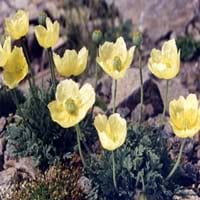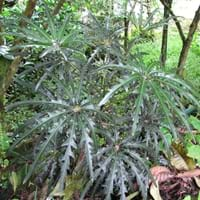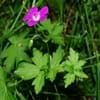Life Span
Perennial
Perennial
Origin
Russia/Siberia, Japan
Polynesia
Types
Not Available
Not Available
Habitat
Alpine Meadows, Rocky areas
Forest edges, gardens, Homesteads
USDA Hardiness Zone
5-7
10-15
Sunset Zone
3a, 3b, 4, 5, 6, 7, 8, 9, 14, 15, 16, 17
H1, H2, 16, 17, 22, 23, 24
Habit
Clump-Forming
Upright/Erect
Flower Color
Light Yellow, Yellow green
Yellow, Red, Green
Flower Color Modifier
Bicolor
Bicolor
Fruit Color
Not Available
Blue, Black
Leaf Color in Spring
Gray Green
Red, Green, Dark Green, Brown
Leaf Color in Summer
Gray Green
Red, Green, Dark Green, Brown
Leaf Color in Fall
Gray Green
Red, Green, Dark Green, Brown
Leaf Color in Winter
Not Available
Red, Green, Dark Green, Brown
Leaf Shape
Lobed
Compound
Plant Season
Summer
Spring, Summer, Fall, Winter
Sunlight
Full Sun, Partial Sun
Full Sun, Partial Sun, Partial shade
Type of Soil
Loam
Loam, Sand
The pH of Soil
Acidic, Neutral, Alkaline
Neutral, Alkaline
Soil Drainage
Well drained
Well drained
Bloom Time
Early Summer, Summer
Indeterminate
Tolerances
Drought
Not Available
Where to Plant?
Ground
Ground
How to Plant?
Seedlings
Seedlings
Plant Maintenance
Medium
Medium
Watering Requirements
Average Water Needs, Never Over-water
Do Not over Water, Keep ground moist
In Summer
Lots of watering
Lots of watering
In Spring
Moderate
Moderate
In Winter
Average Water
Average Water
Soil pH
Acidic, Neutral, Alkaline
Neutral, Alkaline
Soil Type
Loam
Loam, Sand
Soil Drainage Capacity
Well drained
Well drained
Sun Exposure
Full Sun, Partial Sun
Full Sun, Partial Sun, Partial shade
Pruning
Cut or pinch the stems, Remove damaged leaves, Remove dead branches, Remove dead leaves
Prune if you want to improve plant shape, Remove damaged leaves, Remove dead branches, Remove dead leaves
Fertilizers
All-Purpose Liquid Fertilizer, as it is a flowering plant, use high phosphorous content fertilizer, Water soluble fertilizers
All-Purpose Liquid Fertilizer
Pests and Diseases
Not Available, Red blotch
Mites, Nematodes, Scale
Plant Tolerance
Drought
Drought
Flowers
Showy
Insignificant
Flower Petal Number
Single
Single
Foliage Texture
Fine
Medium
Foliage Sheen
Matte
Glossy
Attracts
Not Available
Not Available
Allergy
Not Available
no allergic reactions
Aesthetic Uses
Beautification, Showy Purposes
Showy Purposes
Beauty Benefits
Not Available
Not Available
Environmental Uses
Air purification
Air purification
Medicinal Uses
Not Available
Not Available
Part of Plant Used
Not Available
Whole plant
Other Uses
Not Available
Used as Ornamental plant
Used As Indoor Plant
Yes
Yes
Used As Outdoor Plant
Yes
Yes
Garden Design
Alpine, Edging, Mixed Border, Rock Garden / Wall
Container, Feature Plant, Hedges, Houseplant, Screening / Wind Break, Topiary / Bonsai / Espalier, Tropical
Botanical Name
PAPAVER miyabeanum
Plerandra elegantissima
Common Name
Japanese Poppy
False Aralia
In Hindi
Japanese Poppy
Aralia
In German
japanische Poppy
falsch Aralia
In French
Poppy japonaise
faux Aralia
In Spanish
amapola japonesa
Falso Aralia
In Greek
Ιαπωνικά παπαρούνας
Λάθος Aralia
In Portuguese
Poppy japonês
Aralia false
In Polish
japoński Poppy
fałsz Aralia
In Latin
Papaver Italica
falsum Aralia
Phylum
Tracheophyta
Not Available
Class
Magnoliopsida
Magnoliopsida
Order
Ranunculales
Apiales
Family
Papaveraceae
Araliaceae
Clade
Angiosperms, Eudicots
Angiosperms, Asterids, Eudicots
Tribe
Papaver
Not Available
Subfamily
Paperveroideae
Not Available
Number of Species
Not Available
Season and Care of Japanese Poppy and False Aralia
Season and care of Japanese Poppy and False Aralia is important to know. While considering everything about Japanese Poppy and False Aralia Care, growing season is an essential factor. Japanese Poppy season is Summer and False Aralia season is Summer. The type of soil for Japanese Poppy is Loam and for False Aralia is Loam, Sand while the PH of soil for Japanese Poppy is Acidic, Neutral, Alkaline and for False Aralia is Neutral, Alkaline.
Japanese Poppy and False Aralia Physical Information
Japanese Poppy and False Aralia physical information is very important for comparison. Japanese Poppy height is 10.20 cm and width 10.20 cm whereas False Aralia height is 760.00 cm and width 300.00 cm. The color specification of Japanese Poppy and False Aralia are as follows:
Japanese Poppy flower color: Light Yellow and Yellow green
Japanese Poppy leaf color: Gray Green
False Aralia flower color: Yellow, Red and Green
- False Aralia leaf color: Red, Green, Dark Green and Brown
Care of Japanese Poppy and False Aralia
Care of Japanese Poppy and False Aralia include pruning, fertilizers, watering etc. Japanese Poppy pruning is done Cut or pinch the stems, Remove damaged leaves, Remove dead branches and Remove dead leaves and False Aralia pruning is done Prune if you want to improve plant shape, Remove damaged leaves, Remove dead branches and Remove dead leaves. In summer Japanese Poppy needs Lots of watering and in winter, it needs Average Water. Whereas, in summer False Aralia needs Lots of watering and in winter, it needs Average Water.





